- Administrator
- Albums and Singles
 By now, pretty much everyone knows what to expect from a Whitehouse album, and Whitehouse seem satisfied to fully play into these expectations. Restraint and subtlety have never played a part in the project, and the Whitehouse discography seems to chart very little in the way of musical evolution in the more than two decades the group has been operating.
By now, pretty much everyone knows what to expect from a Whitehouse album, and Whitehouse seem satisfied to fully play into these expectations. Restraint and subtlety have never played a part in the project, and the Whitehouse discography seems to chart very little in the way of musical evolution in the more than two decades the group has been operating. Susan Lawly
Despite all this, noise fans who have bothered to look beyond the old familiar accusatory barking and blistering squalls of aggravating noise may have noticed a certain level of maturity creeping into their work, along with a newfound willingness to travel outside the time-tested Whitehouse formula.
The new album Asceticists 2006 features a now streamlined line-up that no longer includes author Peter Sotos, whose contribution to 2003's Bird Seed—a cut-up assemblage of television and documentary soundbites about sex crimes and child abuse—was one of the most harrowing and brutal tracks on an already brutal album. Due to creative differences with the band (partially documented in the new Sotos collection Waitress), Sotos either quit or was fired, depending on who you believe. Pared back to the familiar duo of William Bennett and Philip Best, Whitehouse here concentrate on perfecting their formula, travelling further into the same dark, confrontational and transgressive territory they have been inhabiting for years, finding newer and ever more devastating ways to embody aggression, terror and discord. This perfection involves the introduction of a few new techniques that seem to be outside the usual bag of minimalist noise tricks, make the album's title seem disingenuous.
By calling themselves Asceticists, Bennett and Best suggest an aggressively minimalist stance, stripping back everything to its absolute essence, a strict reductionism that essentializes their aesthetic to its most potent state, willingly forgoing pleasure and creative indulgence in pursuit of something pure, or even sacred. Perhaps this is true of their ideology, or of their continued pursuit of sonic realms that alienate all but the most masochistic listeners, but it is certainly not true of their sound palette, which has actually expanded considerably in recent years. Early Whitehouse is pure sadism—plain, simple and unapologetically ugly. It would be inaccurate to suggest that Asceticists is anything other than a noise album, but the newer explorations of rhythm, stereo effects, subtle tonal shifts and atmospheric textures seems to indicate that maturity is almost subliminally creeping into the mix, problematizing the kind of blind provocation, nihilism and punk infantilism that Whitehouse is known for.
Though they introduced the first hints of rhythm some time ago—all obtuse, upended aggro-industrial splatter—the role of the "beat" seems to play an increasingly large role in Whitehouse's output, figuring in four of the seven tracks here. Taking their cue, perhaps, from the fractured, sadistic beat constructions of the Digital Hardcore acts or newer artists such as Autechre and Venetian Snares, artists who in many ways have redefined an industrial noise aesthetic that no longer has to be rooted in the squall and feedback, and can create the same confrontational ruptures using the "beat" as a weapon. Though this may have seemed at first like a concession, it's now impossible to imagine Whitehouse without this dimension, as it gives their noise an urgency and propulsion that keeps it from turning into the sort of passive, undifferentiated meditational noise offered by many artists. Merzbow has used rhythms to similar effect, although his ridiculous serialism and prolificacy makes most of his work seem curiously devoid of value and superfluous.
The same could not be said of Whitehouse, who with Asceticists 2006, seem once again to be the most vital and relevant group of their kind currently recording and performing. The lyrics on the album are familiar territory: angry vituperations delivered into a megaphone with a caustic, accusatory tone. However, it seems that with each successive album, Bennett and Best hone in with greater linguistic specificity on the object of their hatred and violent dissent. At times, these lyrics function as a kind of devastating polemic, at other times like brutal poetry. The themes of hypocrisy, moral degradation and personal destruction are given precise articulation with images of child abuse, underground sex trade, violent breaks with political currency. The track "Dans" uses the loose metaphor of dance to map out views on the performative nature of human behavior: "So okay pick a child, any child...Skinny boy arms form the cross/Heavy hand pulls down hard on unformed mini-muscle/What fucking choreography." All this amid a maelstrom of twisted metallic distortion and the digital undermining of audio cohesion.
"Language Recovery" seems to take dead aim at ex-friends, critics and enemies of the band, successively revealing layers of hypocrisy and bitter betrayals: "What kind of wronged animal are you?/Remote viewing, crystal worship/Water divising, and other esoterica...Now everything's up for sale/And it's just about marketing now, right?" "Guru" is the first indication of Whitehouse's stylistic evolution, as the track is quite dynamic, using subtle stereo effects and tonal shifts to map out a specific topography that doesn't just sound like one solid noise attack, but achieves several moment of an almost psychedelic manipulation.
Perhaps "Nzambi La Lufua" (a title which reminds me of the Susan Lawly compilation Extreme Music From Africa) is the most unexpected track on the album, a two-and-a-half minute instrumental formed of scraping harmonic textures that create a melodic progression, unheard of for Whitehouse. This clears the palette for the dark and Dionysiac "Killing Hurts Give You the Secret," another track that figures a thrilling evolution, from subterranean paranoia to triumphant nihilist revelation. "Ruthless Babysitting" seems like the sequel to Bird Seed's "Wriggle Like a Fucking Eel," a cruel and devastating primal punk scream that would be the radio single, if anyone played Whitehouse on the radio. Best screams a misogynistic rant over a machine-gun spray of head-battering rhythms that explode over a digital blur of thought-canceling audio cruelty.
Bennett and Best would probably be loathe to admit it, but Asceticists 2006, despite its misleading name, shows that their music is clearly evolving and maturing, and is both more complex and more approachable now than it has ever been. The album's slim running time and confrontational dynamism guarantees that boredom and passivity cannot persist while listening to the album. For all of the musical masochists in our midst, this album should do the trick quite nicely.
samples:
Read More
- Administrator
- Albums and Singles
 I can't break down my love for this new TomasAndersson 12” to the kind of buzzwords that would explain its totalitarianeffect on even my own hermetic listening patterns. This ishead-banging techno without the flashy Raumschmiere-isms, crystalline andcolorful, music to stomp along to: wild, light, heartbeat stompin’ action.
I can't break down my love for this new TomasAndersson 12” to the kind of buzzwords that would explain its totalitarianeffect on even my own hermetic listening patterns. This ishead-banging techno without the flashy Raumschmiere-isms, crystalline andcolorful, music to stomp along to: wild, light, heartbeat stompin’ action.Bpitch Control
I can say that this has spun for the loneliestof squinty morning teas to the last speed-driven Saturday night and a hundredmiles in between, those patterns like electric dominos falling inside mysternum and twitching with each eyebrow in slow approach to a sleep thatflickers. Shit is tweaked, reallyhyper-minimal, ecstatic-based though tight as drum.
Andersson works insquealing highs and rolling lows as firm as the resolve with which they’rewhittled into pulsing blasted fragments, rolled into inhuman repeat andextra-human stutter. With this, he is swinging Bpitch back into alabel of plastic anthems, no subtleties allowed; it is absolute,button-mashed, BIG electro.
samples:
Read More
- Administrator
- Albums and Singles
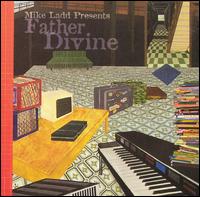 Time was, the words "Mike Ladd" were routinely thrown in alongside oneslike "Gil Scot-Heron." While the latter-named beat-poet is stillpopular in coffee houses and among staffs of student literary journals(as well as other places Ladd never broke into), the Cambridge, MA-bornformer's been sliding back into the obscurity from whence he came, abrief five years after dropping the masterful Welcome to theAfterfuture on us.
Time was, the words "Mike Ladd" were routinely thrown in alongside oneslike "Gil Scot-Heron." While the latter-named beat-poet is stillpopular in coffee houses and among staffs of student literary journals(as well as other places Ladd never broke into), the Cambridge, MA-bornformer's been sliding back into the obscurity from whence he came, abrief five years after dropping the masterful Welcome to theAfterfuture on us.ROIR
To his defense, we read he's been damn busy: he upand left his Brooklyn home base for Paris (like any good Americanwordsmith); explored; met someone special; and finally came back tostart a family and tie up some loose ends, namely, the Father Divineproject he'd left unfinished. The record is his first for ROIR, a labelhe chose to work with based upon its history with raw, analog-soundingmusic, even more specifically, Bad Brains. And I only know this because I readthe press release, not because I listened to Father Divine, easily the most electronic/mechanical sounding record Ladd's yet to put out.
His trademark poet's touch is still there—if you can find, hidden asit is underneath too-busy tracks like the blaring Casiotone sirens on"Awful Raw." Actually, the "poetry" isn't so hot on that one either, asit's a tirade on the evils of TV. Not that love's not a tired subject,but at least Ladd can ruminate on lovin' without sounding ridiculous.In fact, ignore all of that, because after "Awful Raw" and twopleasant-if-irrelevant all-instrumentals (one a jam session betweenan organ and a drum kit that somehow builds into an electro-discoclimax) Father Divine suddenly turns back into "classic" Ladd: the coffee house poet doign his thing behind a soft, neo-soulgroove backdrop.
There's some spots of brilliance in betweenthe new and the old. "Black Rambo" and the "Last Sea" provespace rock and downbeat jazz can jam in peace, and "Barney's Girl" is asoulful, playful trip that packages Ladd's powerful pen with hisremarkable storytelling ability. But the crazy shift...ah! Some mightcall the inexplicable segue Mike being "creative," but it feels like ahijacking. Rather than righting the ship, it capsizes it, and thatain't pleasant.
I really like Mike Ladd, he's stillhands-down one of the finest poets in hip-hop, with soul and spiritleaking from every stanza, and he's capable of unbridled creativity inthe often-stagnant world of hip-hop (last year's Negrophilia project is a prime example). At its very best, Father Divine can claim to be of the same Zeitgeist, but it's far too scattered and messy to make a compelling case. Hopefully, Father Divinewill be looked back upon as an aberration, because if it signals thestart of a trend for Ladd or takes attention away from gems like Negrophilia, it will be criminal.
samples:
Read More
- Administrator
- Albums and Singles
I don't remember much about our plots, but I rememberthey were good. Our pal Steve was the editor of the features section forthe newspaper and was the enabler for our serial silliness. After aboutfour or five episodes, Noah and I ran out of either fodder or interest forour stories. The Residents had a similar fling with the subterranean in1983. The band's dalliance lasted only slighted longer than ours, andboth produces a similarly important corpus of work.
Mute
The Residents devised the Mole Trilogy around 1980 to be actually a pair oftrilogies which would both narrate and document the story of the Molepeople. The short story of the Moles is that they were forced leave theirsubterranean home because of religious superstition. They ended upmigrating to the west coast of their world and clashing with theindigenous Chub race. As The Residents scripted it, the story clumsilyunfolds to suggest resonances of various socio-political situations inAmerica and beyond, complete with a hybrid race of Moles and Chubs forminga pop group called The Big Bubble. One of the trilogies of albums wasdesigned to narrate the tales of the Moles and Chubs, while the other wasto serve as anthropological field recordings of the Mole and Chub races,documenting the culture of both civilizations. As you might surmise, thearc of this project was ambitious and it fizzled before it ever really gotrolling. The concept tour was planned but never executed and thetrilogies were aborted after half of the albums were completed. (I canpicture boxes of Mole stickers sitting in someone's San Francisco basementright now. ) Much of the enigmatic project was typical of thehyper-enigmatic Residents, but since they did manage to record three ofthe six albums from the pair of trilogies, they have been reissued withsome critical liner notes and some fancy booklet-style packaging.
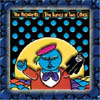 The Tunes of Two Cities and The Big Bubble survive as partsone and two of the anthropological trilogy. Two Cities interlacessongs from the Moles and the Chubs predating the emigration of the Moles.The songs culled from Mole culture are full of darkness, cacophony, andreverb. Conversely, the songs culled from Chub culture tend more towardsthe outwardly poppy: more piano, brighter arrangements, and loftierfeelings. All songs are largely instrumental, though intoned chantingdoes occur on songs like "Happy Home," "God of Darkness," and "A Maze ofJigsaws." The chants sounds as though they could be incidental vocals,caused more by the stirrings of inanimate instruments than animate voices.Though I find the music of both civilizations mostly unlistenable, let'stalk about the Chubs' music first. "Serenade for Missy" is Chubic musicat its best, full of stilted guitar, horns, and strings. It's big bandmusic played by humanoids without the full complement of a human genome.There is something slow and awkward about the arrangement which gives theimpression that you are privy to a civilization just learning what it cando with music. "Smack Your Lips (Clap Your Teeth)" might mimic the doubleimperative appellation of a band like Clap Your Hands Say Yeah, but don'texpect any of the David Byrne hero worship which said band usuallyemploys. Instead, there are maddening flourishes powered by a samplerwhich repeat indefinitely. "Song of the Wild" is the strongest Chub tunebecause of its intermittent moodiness which hangs like a grey cloud on ahorizon which was undoubtedly was cut with the silhouettes of approachingMoles. Such indecision and sadness has never been isolated in suchsoulless music.
The Tunes of Two Cities and The Big Bubble survive as partsone and two of the anthropological trilogy. Two Cities interlacessongs from the Moles and the Chubs predating the emigration of the Moles.The songs culled from Mole culture are full of darkness, cacophony, andreverb. Conversely, the songs culled from Chub culture tend more towardsthe outwardly poppy: more piano, brighter arrangements, and loftierfeelings. All songs are largely instrumental, though intoned chantingdoes occur on songs like "Happy Home," "God of Darkness," and "A Maze ofJigsaws." The chants sounds as though they could be incidental vocals,caused more by the stirrings of inanimate instruments than animate voices.Though I find the music of both civilizations mostly unlistenable, let'stalk about the Chubs' music first. "Serenade for Missy" is Chubic musicat its best, full of stilted guitar, horns, and strings. It's big bandmusic played by humanoids without the full complement of a human genome.There is something slow and awkward about the arrangement which gives theimpression that you are privy to a civilization just learning what it cando with music. "Smack Your Lips (Clap Your Teeth)" might mimic the doubleimperative appellation of a band like Clap Your Hands Say Yeah, but don'texpect any of the David Byrne hero worship which said band usuallyemploys. Instead, there are maddening flourishes powered by a samplerwhich repeat indefinitely. "Song of the Wild" is the strongest Chub tunebecause of its intermittent moodiness which hangs like a grey cloud on ahorizon which was undoubtedly was cut with the silhouettes of approachingMoles. Such indecision and sadness has never been isolated in suchsoulless music.
The Mole sounds are largely grim. "A Maze of Jigsaws" starts out withsome deflating squawks and makes me want to listen to AZ's Music forScattered Brains and embrace it more. The circus noises give way adark and spiraling death drone, ironically easier to listen to than thefirst half of the song. The other five songs are a deliberate descentinto further Mole mayhem. If the Chubs' songs were the Apollonian birthof musical forms, than the Moles' songs are most certainly the Dionysiacdestruction of these forms. Encased in the Mole music is totalobliteration of musical order and learning. Instead of music for theconnoisseur, you have music for the dreary and depressed masses; theworking man's soundtrack. Stay far away if you want avoid sunken-couchalcoholism by the end of the working day. But if you must listen, atleast try to envision these songs as the soundtrack to an episode ofDoctor Who, Pertwee-era.
The most impressive thing about The Big Bubble was ostensibly itsoriginal gatefold packaging. I won^Rt even pretend to understand the forceof the meta-referential retardation which went on with the originalrelease, but the liner notes with the reissue attempt to shed the variouslayers of the artsy onion created by the Residents. As for the music,recall that this is supposed to be a document of the pop super-groupformed by hybrid Moles and Chubs. The songs are cavernous, sometimesplayful, and constantly unintelligible. All in all, this is a far betterlisten than the field recordings from The Tunes of Two Cities.Listen to "Hop a Little" and try not to imagine the horrible dungeontorture scenes replete with salt and razor wire which I conjured in myhead. The song is like a passion play between torturer and prisoner; themusic is frighteningly convincing as stunning dialog. "Cry for the Fire"actually strives for the anthemic and nearly reaches it. By this point,the songs are threatening to be understood instead of simply being aragout of nonsense and fabricated language. A few more songs and you cometo the end of the album. Suddenly, the band has evolved into a truer popband than when they began. As with the earlier anthropological album, youas the listener are witness to the evolution of music theory. This one ismore rewarding than the previous, though.
samples:
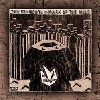 Mark of the Mole theoretically tells the story of the Mole peopleas they emigrate from their home to the land of the Chubs. Besides PennJillette's ominous weather report in the beginning of "Voices of the Air,"nothing feels particularly narrative about the album. It would be likeinterpolating the plot details of "Willy Wonka and the Chocolate Factory"by analyzing the lyrics of the various ditties and numbers from the film.If you can glean anything from the Oompa Loompa song, you are a betterreader than I. As such, most of the Mole saga has to be extrapolated fromthe liner notes. The musical soundtrack to the story is plodding,shattered, and caustic. It certainly feels like a score to somethingvisual, but I find it difficult to conjure a strict film in my head whenall I have are images without plot. The accompanying disc,Intermission, is solelyinstrumental music and simply reinforces the images without furthering theplot.That said, the images are sharply defined and dripping with grimy realism."Migration" has a sublime aptitudefor detailing the long march of the Moles' forced emigration. Tolkeincould have used such music for Frodo and Sam. "Another Land" is allbubbly and has fuzzy narrative soaking in the background. If I listenedmore closely, I could probably discern more of the plot for which I amsearching. But that is the peril of a soundtrack, destined from birth tobecome background bedding for moving pictures and rarely to stand on itsown. The Residents have created a well-crafted soundtrack for the Molemovie in their heads. Unfortunately, their ambition outpaced theirexecution and they never did finish the production. What you're left withis an anthropological artifact of its own: the fossil of an art-rock bandwhose concept child was aborted mid-term. It is hardly one of a kind.
Mark of the Mole theoretically tells the story of the Mole peopleas they emigrate from their home to the land of the Chubs. Besides PennJillette's ominous weather report in the beginning of "Voices of the Air,"nothing feels particularly narrative about the album. It would be likeinterpolating the plot details of "Willy Wonka and the Chocolate Factory"by analyzing the lyrics of the various ditties and numbers from the film.If you can glean anything from the Oompa Loompa song, you are a betterreader than I. As such, most of the Mole saga has to be extrapolated fromthe liner notes. The musical soundtrack to the story is plodding,shattered, and caustic. It certainly feels like a score to somethingvisual, but I find it difficult to conjure a strict film in my head whenall I have are images without plot. The accompanying disc,Intermission, is solelyinstrumental music and simply reinforces the images without furthering theplot.That said, the images are sharply defined and dripping with grimy realism."Migration" has a sublime aptitudefor detailing the long march of the Moles' forced emigration. Tolkeincould have used such music for Frodo and Sam. "Another Land" is allbubbly and has fuzzy narrative soaking in the background. If I listenedmore closely, I could probably discern more of the plot for which I amsearching. But that is the peril of a soundtrack, destined from birth tobecome background bedding for moving pictures and rarely to stand on itsown. The Residents have created a well-crafted soundtrack for the Molemovie in their heads. Unfortunately, their ambition outpaced theirexecution and they never did finish the production. What you're left withis an anthropological artifact of its own: the fossil of an art-rock bandwhose concept child was aborted mid-term. It is hardly one of a kind.
samples:
Read More
- Administrator
- Albums and Singles
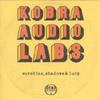 By its very nature its unsurprising that most instrumental beat-driven music seems to be kicking its heels, waiting for an MC to jump aboard the track to bring it to life. Shying away from ‘smart’ breaks and crate dust covered samples this debut concentrates instead on song structures and melodies.
By its very nature its unsurprising that most instrumental beat-driven music seems to be kicking its heels, waiting for an MC to jump aboard the track to bring it to life. Shying away from ‘smart’ breaks and crate dust covered samples this debut concentrates instead on song structures and melodies.
The precision and specificity of the production here rivals many more accomplished artists using similar elements. This is a showcase for a producer spreading his wings and staking his claim for Scottish hip-hop.
Midway between the grime and lights of Scotland’s twin capitals sits the decidedly uncool town of Wishaw. Mark Scanlon’s (the brain behind Kobra Audio Labs) hometown may about to receive its first lifeblood transfusion though. Initial perceptions may be that rural Wishaw does not sit well with a soundtrack of cut up samples and kinetic beats. But there is a sometimes hopeful and sometimes weary home-grown heart here that means this doesn’t sound like it’s imported from, or suited for, some urban streetscape.
Each of the eight songs refuse to take a definitive or easily mapped route as each song bucks and rights itself away from rolling down well worn paths. This is no simulacrum of other artists synonymous with the genre. Taking the slower course, "El Cordobés" begins the album slowly, relying on a delicately swaggering atmosphere and converging elements which build layer upon layer. Twinges of sitar form a warm night sky undercurrent for the combination of an almost oriental melody and intrusive snipped harmonica.
The midnight drive of "Down to the Dozens" shows he’s equally as practiced at marshalling the funk as he is at managing melodies. An incongruent riff built from the plinking of some electronic box rides tight jazzy beats without a seatbelt. A perfectly well placed Heathers sample punctuates the song that’s peppered with surging horn parts, chopped strings and a loop built from dabs of wah wah.
There are so great little moments scattered within these songs which improve the sense that these are the ideas are deliberate and not scattered lucky accidents. Its an impressive introduction that moves from the Mysteron whine and ball bearing beat of "Specterville" to the sunken woozy unsettling air of "We Have the Strength but we Don't Have the Will" with its water soaked clock sound. Hopefully Scanlon will keep to this crooked path and avoid any trips to the big city lights.
Read More
- Administrator
- Albums and Singles
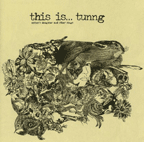 Inthe first five seconds of Tunng’s debut U.S. release, the group’sintentions are made perfectly clear by a vocal and acoustic guitarsample that’s time stretched and hacked into an intro. This is cut andsliced, deformed and reconstructed folk music, and it’s wonderful.
Inthe first five seconds of Tunng’s debut U.S. release, the group’sintentions are made perfectly clear by a vocal and acoustic guitarsample that’s time stretched and hacked into an intro. This is cut andsliced, deformed and reconstructed folk music, and it’s wonderful.Ace Fu
Mother’s Daughter and Other Songs is finally getting a statesiderelease courtesy of Ace Fu, and I’m glad because up until now, I’dnever heard of Tunng. I reckon the same is true for many folks on theseshores, but that should all change soon because Tunng taps into one ofthose inevitable sounds of the moment: electronic-tinged folk. Foryears, laptoppers have been contently twiddling away making non-songswith equipment that excels with experimentation and diversion. Recently,though, those same tools capable of so many distracting tangents havebeen used to add a fresh edge to tried-and-true songwriting.
Tunngis perhaps the best example of the balance between electronic tweakingand simple singing and strumming. The songs here are full of hooks andthey are perfectly built around traditional melodies and capablesinging, but the added layer of electronic beats, effects, andmanipulations make the songs something else altogether. I could easilyimagine hearing this record without all of the digital bits and notthinking much of it, but because those pieces make up part of thepuzzle of Tunng, the songs become impossible to ignore. And because thetwo sides of the Tunng’s sound are brilliantly dancing together ratherthan stepping on each others’ toes, none of it ever feels like agimmick or a tack-on.
I’ve never been a huge fan of folk music,probably because it seemed ancient and irrelevant to me during thoseyears when I was finding things that I liked on my own. It was alreadyolder and fussier than the music my parents liked, even, so I neverdeveloped a taste. On any night in any town, I can walk into a coffeeshop or bookstore or small club and probably find someone plowingthrough heartfelt songs with a stool and a guitar, and the sheeromnipresence of that tradition tends to turn me off. Thankfully throughartists like Tunng, I’m learning that there’s a fresher approach tothose songs that can lure in cynical technophiles with a glitch, andhold us with a song. This is a great, great record, and I can onlyguess that we are about to hear a lot more like it.
samples:
Read More
- Administrator
- Albums and Singles
 Starting out as commissioned music for an audio weblog, Sandro Perri and Craig Dunsmuir’s studio project, Glissandro 70, has put together a unique album that blends many styles and influences. Although chiefly taking from prime Detroit techno and post-punk New York, they combine these well mined sound sources with a worldly edge by including dub, Latin and African elements.
Starting out as commissioned music for an audio weblog, Sandro Perri and Craig Dunsmuir’s studio project, Glissandro 70, has put together a unique album that blends many styles and influences. Although chiefly taking from prime Detroit techno and post-punk New York, they combine these well mined sound sources with a worldly edge by including dub, Latin and African elements.
On paper, this sounds like just another retro band but Glissandro 70 are more than that. They have recycled hackneyed ideas and put together a wonderful collage of sounds that feels like something new.
The majority of songs on the album consist of short musical phrases,normally a cheery guitar line in an odd meter, accompanied by layers ofrepeated vocals. This could get boring quite quickly but most of thetime Glissandro 70 keep it far within the realms of enjoyable. “BolanMuppets” is a beautiful piece; it sounds exactly like the best summervacation with a loved one. It’s followed by “Portugal Rua Rua,” whichis the one track where the duo stumbles but only for the first coupleof minutes. Once the slightly annoying vocal loop that starts the songfades out and the wah guitar kicks in (followed by a nice chant liftinglyrics from Model 500’s “No UFOs”), the song falls into place.
With only five tracks, it seems like I’ve only hit play when the album is spinning down. At just over 35 minutes, I wonder have Perri and Dunsmuir deliberately kept it short to give maximum impact to the material. I hope there is more as in this age of the 80 minute album, this feels like more like an EP than an album. Of course, this could be an example of an artist showing some restraint in making an album as they want it, as opposed to filling a disc to bursting point.
One thing that I question though is Constellation’s decision to release this album in March. Glissandro 70 is a summer album to my ears. This is somethingthat I’m sure to spin more in July than I have been over the last fewweeks. There’s something depressing about listening to a track like“Analogue Shantytown” while it pisses rain and freezes brass balls offa monkey outside.
samples:
Read More
- Administrator
- Albums and Singles
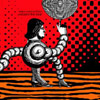 Volcano the Bear's dramatic, highly ambitious two disc (two-CD or two-LP) return is a lot to ingest, however, every second is rewarding in what could easily be one of my top albums of the year so far and my favorite Volcano the Bear release to date.
Volcano the Bear's dramatic, highly ambitious two disc (two-CD or two-LP) return is a lot to ingest, however, every second is rewarding in what could easily be one of my top albums of the year so far and my favorite Volcano the Bear release to date.

Describing Volcano the Bear's music is about as difficult as identifying the instruments. The quartet's arsenal of gear is transcendant of time and space, culled from different cultures and different eras, from classically orchestral woodwinds (albeit sometimes just blowing through the mouthpiece) to African thumb piano, helicopter sounds, thunderstorm and rain and running water, medieval squeeze boxes, squeak toys, chirping or crying bird sounds, and Asian stringed things.While improvisation has been integral to the band's development, Volcano the Bear can always be counted on very cold-calculated and composed songs appearing on their official studio albums.Their arrangement is loose but never wanky or show-offey.Perhaps it's this lack of soloing and pretention that has kept them from appropriate recognition by some of the major experimental media in favor for a whole "free folk"/"weird rock"/"new weird America" obsession.
Unlike an album where one style or theme is exploited for nearly the entire duration, Classic Erasmus Fusion showcases a variety of what Volcano the Bear have been practicing for years.Included are accordion like sounds from the squeeze box on "Hail the New Manifesto," which recalls their classic and gorgeous "The Colour of My Find;" unidentifiable things as found on mindbending scraping drones of "Baroque Sensation;" the buzzing of "Lifetime;" and the fantastic arrangement of either harpsichord or the above the fret strings on the guitar, bowed strings, and bell sounds on a song like "Russian Milk."Vocals on songs like "Did You Ever Feel Like Jesus?" and "Sharp as the Queen's Teeth" are not entirely dissimilar to early 1980s acts like The Shiny Men or This Heat, both in delivery and surrealistic content, while other tracks like "The Merry Potter" features a monotone chant over a (more than likely but not quite 100% sure) clarinet, drum, and a hollowed out digeridoo-like instrument interplay.It ends on two lengthy pieces which are long, drawn out droning pieces that don't quite match the length and meditative qualities of stuff from The Mountains Among Us, but the humming and buzzing of what could be a harmonium combined with vocals and processed gongs on something like "See Me Now" works very nicely.
The themes and threads may be loose, but the playing is never sloppy: Daniel Padden's guitar playing, Aaron Moore's drumming,Nick Mott's wind instruments, and Laurence's (now Clarence?) electronics are far more seasoned than on any other past release.Parts of "Hey Judo," for example, feature wonderfully fun, punchy, fast-paced un-Westernplaying by what could be an oud, and the lyrics of "My Favourite Tongues," which might be recognizable from "Seeker" and "New Seeker," are accompanied mainly by some prominent pizzicato plucking.The contexts of the song titles and lyrics are so obscure that I couldn't even begin to make educated guesses at their origins but it's okay to accept that which is somewhat beyond description as it's both well-constructed and enjoyable.
I assume the LP version will be a similar listen as despite the record label's claims, the band insists the only differences have to do with crossfades.And while I've griped in the past on shoddy Beta-Lactam Ring packaging, they must be commended finally for the latest string of CDs, including this one, to be housed in an attrative, rigid, gatefold LP-replica.Hopefully the latest incarnation will make some more live rounds on these shores.
samples:
Read More
- Administrator
- Albums and Singles
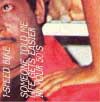 Godspeed member Aidan Girt's latest full-length as 1-Speed Bike is this compilation of tracks from two 12" EPs and new material. Despite coming from different sources, the tracks are blended seamlessly together into one long crazy mix tape and are surprisingly uniform in style and feel.
Godspeed member Aidan Girt's latest full-length as 1-Speed Bike is this compilation of tracks from two 12" EPs and new material. Despite coming from different sources, the tracks are blended seamlessly together into one long crazy mix tape and are surprisingly uniform in style and feel.Broklyn Beats
The few tracks with vocals stand out as the most engaging of the bunch. The often-political spoken word vocals add interest and texture the instrumental tracks are lacking. I loved Girt's stream-of-consciousness and his rambling ranting delivery, but the music itself is rather samey; each track seemed to be variations on the same theme of electronic chatter, blasts of static, and drum machines at a frenetic pace. Toward the end of the album I found it was getting rather tiresome. Other than the vocal tracks I just did not find much to sink my teeth into. The penultimate track, "Will Death Stop Lenny Kravitz's Ego," breaks the mold somewhat with jarring rhythmic bursts of samples distorted to the point of being almost unrecognizable as music is easily the most engaging instrumental on the release.
The track titles alone though provide a fair bit of entertainment; perhaps they're just a gimmick because most have nothing to do with the music that I can tell, but titles like "Vanilla Ice Corrals his Pet Wallaroo, Bucky, into a Trailer After it, and his Goat Pal Honcho, Escaped from a Relative's Home" and "My Dick is this Small Because it's -40 Degrees F" are undoubtedly attention-commanding. Ultimately Someone Told Me Life Gets Easier in Your 18's is more suited as a backdrop than as the main attraction.
samples:
- El Gallito Intro
- My Dick is This Small Because it's -40 Degrees F
- Will Death Stop Lenny Kravitz's Ego?
Read More
- Administrator
- Albums and Singles
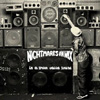 Noticeably stepping away from 2002's accessible Mind Elevation,in particular its almost radio-friendly verse-chorus-verse cuts, thelatest N.O.W. album serves not as a return to form but rather as abridge between that album and the tokeworthy downtempo delights of hispost-bleep back catalog.
Noticeably stepping away from 2002's accessible Mind Elevation,in particular its almost radio-friendly verse-chorus-verse cuts, thelatest N.O.W. album serves not as a return to form but rather as abridge between that album and the tokeworthy downtempo delights of hispost-bleep back catalog.Boastingstellar production that shames his gaggle of imitators, the results areby-and-large gratifying, but can prove somewhat grating due to anunyielding sense of repetition. No one can deny that George Evelynknows how to lay down a damn fine groove. How effective he istranslating that into a proper song remains up for debate. Case inpoint: although exhibiting a solid foundation, opener "Passion" justbegged for something more than herbal accompaniment to prevent me fromskipping through at its midpoint, a rather rough way to start off analbum.
However, Evelyn knows how to take total control of his listeners,blunted or otherwise, and applies himself towards such means on severaloccasions here. No true roots reggae devotee could possibly pass overthe sun-drenched "Flip Ya Lid", with classic toasting, subtly dubbyechoes, and a bassline begging for a massive sound system. "I Am You"is good old fashioned American blues put through the N.O.W. ringer,lyrically sparse but sonically infused with sincere emotion andspirituality. "Damn" stands out as the true gem of this record,brimming with soulful R&B sensibility and a hefty dollop ofuplifting gospel, starkly contrasting with the desperation of thelyrics.
His best album since the essential Carboot Soul, In A Space Outta Soundgoes down easy for purists and novices alike, proving that despite evenmy own protests, Warp isn't completely useless these days.
samples:
Read More
- Administrator
- Albums and Singles
 Impractical Cockpit, a collective of now-scattered New Orleans’natives, has released five records prior to To Be Treated. And whiletheir music does bear some of the characteristics of the oft-referencedfree-folk genre, Impractical Cockpit’s sound actually recalls a greatdeal of early 80s experimental hardcore like Flipper and early ButtholeSurfers.
Impractical Cockpit, a collective of now-scattered New Orleans’natives, has released five records prior to To Be Treated. And whiletheir music does bear some of the characteristics of the oft-referencedfree-folk genre, Impractical Cockpit’s sound actually recalls a greatdeal of early 80s experimental hardcore like Flipper and early ButtholeSurfers.Load
On the opener, “Furrowed Frow,” dense torrents of guitar shrapnel aretossed off while rattle-trap drumming keeps the song plodding along.The following song, “Passion of a Cop,” is even more desolate sounding.Howling vocals and noisy passages of industrial din make this song oneof the first to jump out ahead of the rest. A minute in and insistentdrumming turns the song from a rambling, unfocused noise jam into apiece of pretty bracing psychedelic fuzz. One perhaps the strongestsong of the whole album, “No More Strobelight,” the band eschew thejamming and instead opt for tightly coiled skronk rock, that sounds notunlike noise-funk outfit Black Eyes. The rest of the album alternatesbetween disjointed guitar pickings and eerie folk jams, such as the onefound “Grails Golden Garden,” which by the end of its six minutesdevolves into a hushed ambient hum, with occasional flourishes ofchimes and marimba. At the other end of the spectrum is a song like“Creeping Giant,” easily the weakest one present on To Be Treated, withits howling vocals and simple drum beat. Perhaps the most bizarre songincluded here is “Latitude: North 41° 53' 0" - Longitude: West 70° 45"46'” which consists of random sounds and various voices rattling offseemingly nonsensical strings of numbers.
To Be Treated isextraordinarily uneven, a statement which most would probably findobvious given a quick listen. Yet despite its constant shifts in moodand sound and structure, Impractical Cockpit still manage to make it anoverall engaging listen.
samples:
Read More

